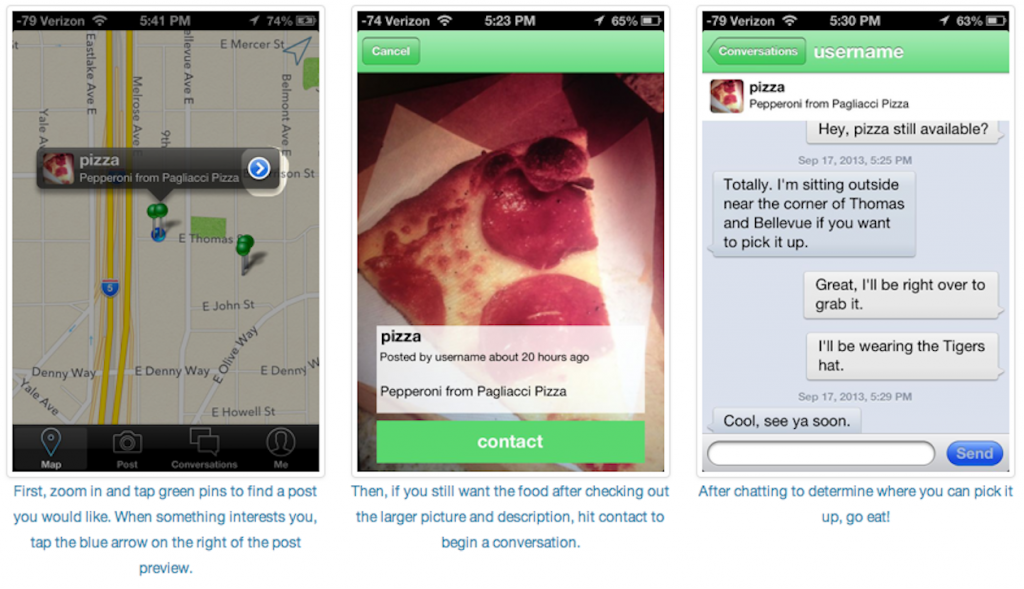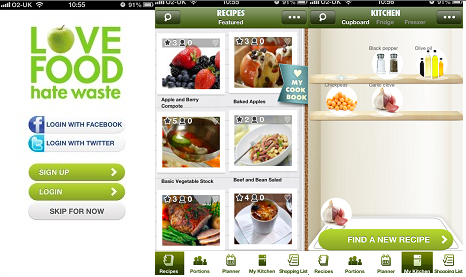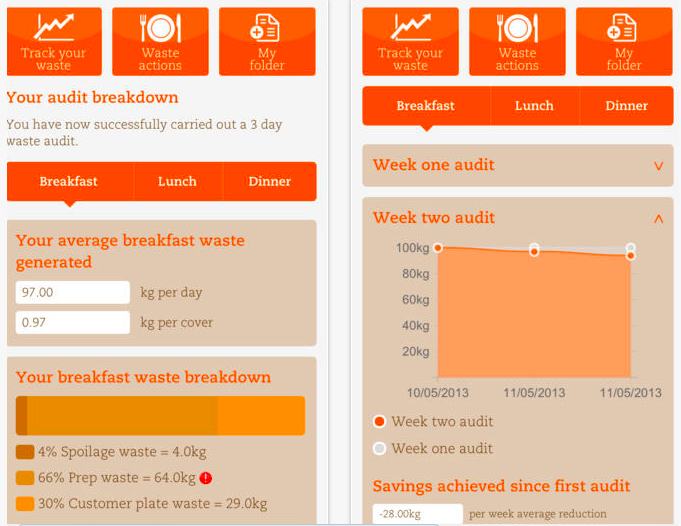From throwing away your spoiled vegetables to restaurant kitchen scraps, food is the largest single contributor to municipal solid waste in the US, at more than 36 million tons a year. Globally, we waste an equally staggering amount—1.3 billion tons of food is thrown away, which is enough to feed the 868 million who are hungry.
There are many organizations working to reduce food waste through efforts like food banks, composting, and meal planning. And over the past few years, a number of technologies have emerged to reduce food waste across the supply chain. From restaurant waste tracking to leftover swapping, the following 6 technologies are working to disrupt food waste and decrease the amount of food thrown into landfills.
LeftoverSwap
Perhaps one of the more unique, and highly controversial, new technologies combatting food waste is LeftoverSwap, an online marketplace for leftovers. The iOS app allows users to post a picture and description of their unwanted leftovers on its listing database. Other users in the same geographic region can then trade or simply take the remaining food. Users arrange a mutually agreed upon delivery method. There are a lot of potential health hazards in taking food from unpermitted strangers. However, co-founder Dan Newman tells NPR that the exchange is all about trust, similar to Couchsurfing.
LeanPath

One of the original players in the waste tracking field, LeanPath offers an automated system for restaurants, universities, hospitals, and other food service organizations. Its integrated scale and touch screen device allow users to easily record the amount, food type, location, loss reason, and other information about the food being discarded. Kitchen staff can record the information in less than 10 seconds, immediately prior to disposal. The data is uploaded to a reporting dashboard where it can be analyzed to find sources of waste. LeanPath goes one step further and offers training and coaching to translate the data into actionable steps. There are a variety of customizable rental and purchase options available, with the most basic starting at $199 per month. Its list of customers include ARAMARK Healthcare, MGM Resorts, Sodexo, and the University of California. Around 150 of LeanPath’s clients have reduced food waste by up to 80 percent after installing the system, co-founder Andrew Shakman told Modern Farmer last month.
FoodStar
Supermarkets lose an estimated $15 billion annually in fruit and vegetable losses alone. A significant portion of fresh food from farms never even reaches the grocery store because it has cosmetic imperfections, does not meet the grocer’s size specifications, or is already too ripe. That is where FoodStar steps in. The platform organizes and alerts shoppers of flash sales or deep discounts at their local grocery store on imperfect or already ripe produce. Users can sign up for text or email notifications on FoodStar’s website and receive alerts detailing available products, time, and location of sales. These sales are of financial benefit to both consumers and businesses. Additionally, when the flash sales end any produce that doesn’t find a shopping cart is diverted from landfills to compost facilities.
Love Food Hate Waste
Love Food Hate Waste was launched by nonprofit organization WRAP in 2007 to help reduce food waste in the UK. Earlier this year they created a free iOS and Android app that helps users plan, shop, cook and make the most of leftovers. It includes a variety of recipes and tips for utilizing forgotten and leftover food to create new dishes. Samsung has recently partnered with the campaign to raise awareness and combat food waste by educating consumers about storing and organizing food in a more efficient way.
222 Million Tons
For the many home cooks that struggle to use all of their groceries before they go bad, 222 Million Tons meal planning iPad app offers a compelling solution. The app allows users to create menus and shopping lists based on their household size. The aim is to optimize planning, while still providing enough variety in their home-cooked meals. The app gets its name from the amount of food wasted every year in industrialized nations according to a 2011 UN study.
Wise Up on Waste
Capitalizing on the adage of “knowledge is power,” Wise Up on Waste allows restaurants to track and measure how, when, and where waste is produced. Created by Unilever Food Solutions, the free app—available on iOS, Android, and web-enabled devices—makes it simple for chefs to track the type of waste—spoilage, preparation, or customer plate waste—by meal on a per day and per cover basis. The performance data is then compiled and sent to users by email along with industry comparisons to help them identify cost saving opportunities. Wise Up on Waste also contains a plethora of useful information and tips to help chefs utilize this data and reduce waste.







